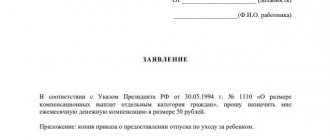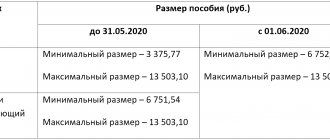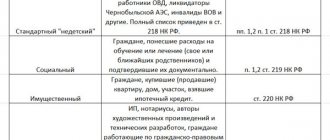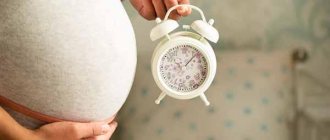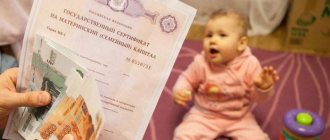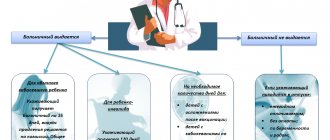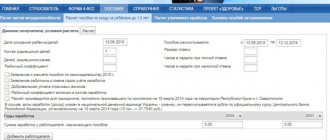In 2021, the government took a number of additional measures to support families with children. Starting this year, parents have the opportunity to receive additional benefits for their second child until he reaches one and a half years old from maternity capital funds.
If you have any questions, you can chat for free with a lawyer at the bottom of the screen or call by phone for any region.
In the new year 2021, families will receive additional financial support from the federal budget for the birth of a third child in 62 regional constituent entities of the Russian Federation, according to Decree No. 1747-r dated August 27, 2018. No new payments are expected in 2021.
Indexation of child benefits in 2021
In recent years, the indexation of social payments, including child benefits, has been carried out on February 1, according to Decree of the Government of the Russian Federation dated January 28, 2018 No. 42.
If before January 1, 2021, increases in benefits, compensation and other payments were carried out ahead of expected inflation, now payments are indexed based on actual inflation over the past year. In 2021, benefits are indexed from February 1.
In the government decree of January 24, 2021, the indexation coefficient for child benefits from February 1 is 1.043.
On February 1, 2021, the following benefits were indexed:
- One-time benefit for women registered before 12 weeks of pregnancy;
- One-time payments in connection with the birth of a child.
The child care benefit for children under 1.5 years of age increased from January 1, due to the fact that from January 1, 2021, the minimum wage (minimum wage) is equal to the subsistence level for the second quarter of 2021.
Indexation of benefits from 02/01/2019.
Every year, starting from February 1, benefits and compensations paid to citizens are indexed in accordance with a number of federal laws. Resolution of the Government of the Russian Federation dated January 24, 2019 No. 32 approved the list of such laws and the indexation coefficient for 2019 - it is 1.043. The said resolution applies to benefits and compensation provided for:
Law of the Russian Federation of May 15, 1991 No. 1244-1 “On the social protection of citizens exposed to radiation as a result of the disaster at the Chernobyl nuclear power plant”;
- Art. 9.1 of the Law of the Russian Federation of January 15, 1993 No. 4301-1 “On the status of Heroes of the Soviet Union, Heroes of the Russian Federation and full holders of the Order of Glory”;
- Art. 23.1 of the Federal Law of January 12, 1995 No. 5-FZ “On Veterans”;
- Part 1 Art. 4.2 of the Federal Law of May 19, 1995 No. 81-FZ “On state benefits for citizens with children” (hereinafter referred to as Federal Law No. 81-FZ);
- Part 16 Art. 11.1, art. 28.1 of the Federal Law of November 24, 1995 No. 181-FZ “On social protection of disabled people in the Russian Federation”;
- Art. 9, 10 of the Federal Law of January 12, 1996 No. 8-FZ “On burial and funeral business” (hereinafter referred to as Federal Law No. 8-FZ);
- Art. 6.2 of the Federal Law of 01/09/1997 No. 5-FZ “On the provision of social guarantees to Heroes of Socialist Labor, Heroes of Labor of the Russian Federation and full holders of the Order of Labor Glory”;
- clause 1 art. 11, paragraph 1, 12 art. 12 of the Federal Law of July 24, 1998 No. 125-FZ “On compulsory social insurance against industrial accidents and occupational diseases”;
Federal Law No. 175-FZ dated November 26, 1998 “On the social protection of citizens of the Russian Federation exposed to radiation as a result of the accident in 1957 at the Mayak production association and the discharge of radioactive waste into the Techa River”;
Part 1, Art. 2 2 of Federal Law No. 5-FZ dated 12.02.2001 “On amendments and additions to the Law of the Russian Federation “On social protection of citizens exposed to radiation as a result of the disaster at the Chernobyl nuclear power plant”;
Federal Law No. 2-FZ dated January 10, 2002 “On social guarantees for citizens exposed to radiation as a result of nuclear tests at the Semipalatinsk test site.”
Thus, from 02/01/2019 the following types of payments are indexed:
- state benefits for citizens with children;
- social benefit for funeral;
- monthly insurance payments that are assigned and paid to an employee if, according to the conclusion of a medical and social examination institution, the result of an insured event was the loss of his professional ability to work;
- monthly cash payment to Heroes of the Soviet Union, Heroes of the Russian Federation and full holders of the Order of Glory;
- monthly cash payment to veterans;
- compensation and other payments to citizens exposed to radiation.
Child care allowance up to 3 years old
A monthly compensation payment for up to 3 years is paid to one of the parents caring for the child. The amount of this benefit was established back in 1994 by Presidential Decree No. 1110 in the amount of 50 rubles.
The last time the issue of increasing this payment was discussed was in 2014, but in the end no decision was made.
The benefit amount will change from 2021
In 2021, there is finally talk of increasing benefits at a “high level.” The information that the payment will increase was confirmed by the Minister of Labor and Social Protection Maxim Topilin, as well as the President and Prime Minister of the Russian Federation.
All three announced that the amount of the benefit would be equal to the regional subsistence minimum per child, that is, more than 10,000 rubles. True, according to Dmitry Medvedev, only low-income families will receive benefits in this amount:
“It was decided to increase assistance to low-income families with children aged one and a half to three years. They will receive more than 10 thousand rubles per child monthly instead of the previous 50 rubles.”
It is not yet known how much the remaining families will receive.
Let's sum it up
The increase in child benefits from January 1, 2021 under the new 2019 law does not affect everyone. At the same time, the allowance of 50 rubles has existed and will continue to exist. But the income of individual families with children aged 1.5 to 3 years will actually increase. The new law will have a positive impact on the following categories of citizens:
- families in which the mother continues to be on maternity leave after 1.5 years, but she is no longer paid benefits from the Social Insurance Fund. Undoubtedly, family income decreases when this payment stops. If previously a family might not have met the need criterion to receive benefits for up to 1.5 years, then perhaps after 1.5 years they will be given a payment. This will allow the family to avoid serious material losses;
- families in which the mother does not work, but takes care of the children and housework. For the first time, they can count on real assistance from the state for children over 1.5 years old;
Unfortunately, the new law will not affect the following categories of families:
- families in which the income per person exceeds the required criterion (regional subsistence level *2). If the income is at least 100 rubles more, then the benefit will not be assigned. However, such families may need benefits no less than others. The problem of “gray” wages in the country has not been resolved. Therefore, people with actual high income, but with low income according to documents, legally receive benefits. While citizens with official income may have a lower standard of living, and still not receive child benefits;
- large families. When the fourth, fifth and subsequent children appear, no new benefits are provided. For families with many children, other social support measures are provided.
You can download the text of the law on child benefits up to three years of age in 2021 here
One-time benefit for the birth of a child
At the birth of a child, a woman has the right to three types of lump sum payment:
- For registration at the antenatal clinic for up to 12 weeks - 655.49 rubles.
- For pregnancy and childbirth. It is calculated based on the average earnings of a young mother over the past two years.
- One-time payment at the birth of a child - 17,328.73 rubles.
In addition to federal one-time payments, there are also regional additional payments. For example:
- In Moscow, a young family in which both spouses have not reached the age of 30 is entitled to a lump sum payment from Luzhkov. For the first child the amount is 5 subsistence minimums, for the second - 7, and for the third and subsequent ones - 10 subsistence minimums.
- in the Moscow region a one-time payment is provided to low-income families in the amount of 20 thousand rubles for the second child,
- in St. Petersburg - 28,700 rubles,
- in Voronezh - 20 thousand rubles for each child born,
- Kaliningrad residents, as well as students and single mothers from the Jewish Autonomous Region - 7 thousand each,
- in Kaluga - 22,326 for 2 children,
- in Khanta-Mansiysk - 10 thousand for the second child,
- In the Chukotka Autonomous Okrug, young parents - 10 thousand rubles,
What payments are due?
Without experience in applying for social benefits, at first it can be difficult to determine the procedure and list of assistance that a representative of a particular social group is entitled to count on. If you have difficulties determining the current current payments, it is recommended to contact special authorities at your place of residence that work in the field of social protection of the population.
However, it doesn’t hurt to independently study the topic, based on the category to which a person considers himself:
- pensioner;
- parent/guardian;
- child;
- disabled person;
- veteran, etc.
In 2021, payments are determined in accordance with federal and regional standards, depending on the category of person and the circumstances of applying for financial assistance.
Additional payment for pensioners and disabled people
Upon reaching retirement age, a person becomes eligible for government funding. Pension payments are also due in a number of other situations of loss of ability to work. In each region, when assigning social contributions, they are based on the minimum amount that will be sufficient to ensure a person’s life. Since the cost of living in Moscow is much higher, pensioners in the capital have a much higher monthly income.
In 2021, the income of a person living in the capital should not be less than 17.5 thousand rubles per month, while in other Russian cities this level does not exceed 12 thousand rubles. The assigned social payments in 2019 are tied to this amount.
Important! In order to receive increased benefits, pensioners often specially arrange payments in the capital, which has increased the number of pensioners. The increase in the number of fake registrations forced the Moscow government to introduce some restrictions - only those who have been registered in the capital for at least 10 years will be able to receive a capital pension.
The amount of social benefits from January 1, 2021 depends entirely on the amount of pension contributions, so that the total income of a pensioner is 17.5 thousand rubles. The average pension is about 15 thousand rubles, which gives Muscovites the right to receive social benefits up to the minimum standard. Federal supplements to persons with disabilities are assigned based on the assigned group and the presence of dependents. The greater their number, the higher the monthly benefit:
If a citizen agrees to a benefit in kind, 1,111.75 rubles are deducted from the pension (for medicines, medical nutrition, travel vouchers to the place of treatment). Additionally, a person with a disability in Moscow will be provided with one-time financial assistance in the amount of 5 thousand rubles.
Disability benefits, taking into account the group, are determined by the number of dependents. If a disabled person is single and is not obliged to support other Russian citizens, his benefit will be:
- 9117.86 rubles for the first disability group;
- 4558.93 rubles for the 2nd;
- 2279.5 rubles for the 3rd group.
If a person has proven that he lived or worked in the Far North and equivalent areas, the amount of the benefit increases. For example, if there are no dependents, a disabled person with group 3 will receive 3,419.21 rubles.
Veterans, war veterans, and honored donors are entitled to additional benefits from the government. They receive 50-100% compensation for housing and communal services, travel, and other obligatory expenses of citizens. This category retains the right to a one-time payment of 5 thousand rubles.
Social payments in 2021 in the capital depend on the social category:
| Category | Amount, thousand rubles |
| Victims of repression | 2,0 |
| WWII participants | 2,0 |
| Participants in the defense of Moscow | 8,0 |
| Home front workers | 1,5 |
| Knights of the Order of Glory, their widows | 15,0 |
| Heroes of Labor, Russian Federation, USSR | 25,0 |
| Parents of the hero of the Russian Federation who died | 15,0 |
The above payments in Moscow are paid in addition to basic pensions, benefits, and are tied exclusively to the person’s special status.
Table of social payments to families living in Moscow
Various life circumstances give the right to a separate type of benefits and allowances. In order to support families with children and minors themselves, an extensive list is being established of which payments will be transferred at a time in 2021:
| Reason for appointment | Rub. |
| One-time payment for early registration of the expectant mother | 600,0 |
| At the birth of the first child (adoption) | 5500,0 |
| At the birth of the second and subsequent children | 14500,0 |
| Payment on the occasion of the birth of triplets | 50 000,0 |
| Compensation for maternity leave in case of job loss | 7000,0 – 9700,0 |
| Birth of a child to parents under 30 years of age | 76910.0 – 153820.0 (based on the number of children already in the family) |
A separate table defines monthly benefits related to raising children:
| Conditions of appointment | Size, rub. |
| Assigning the status of “poor” to a family gives the right to benefits | 1500 rubles from birth to 1.5 years and from 3 to 18 years 2000 rubles at the age of 2-3 years |
| “Having many children” status allows you to receive payments for a child in 2019. | 600-675 rubles for each child 750 rubles if there are 5 or more children |
| Cash compensation for housing and communal services | Up to 4 children – 1044.0 More than 5 children – 2088.0 |
| Telephone payment | 250,0 |
| Purchasing goods for children | 1800,0 |
| Buying a school uniform | 10000.0 (annually) |
Economically difficult times force us to increase financing measures for socially vulnerable citizens and families. In plans for 2019, social payments should be increased several times. At Sobyanin’s initiative, they plan to increase the child benefit to 10 thousand rubles, but so far no relevant legislation has been adopted.
Orphans and survivors
Depending on whether the breadwinner was employed at the time of death, his wards will receive insurance and social benefits. Benefits from January 1, 2021 for minors who have lost 1 parent amount to 5.24 thousand rubles. Orphans receive 10.48 thousand rubles.
The following types of assistance are available for one-time payments to orphans:
- When entering an educational institution after school - 20,639 rubles.
- For employment after graduation – 79,416 rubles.
- When moving to a foster family – 24,000 rubles.
- Purchase of textbooks – 3 times the amount of the scholarship.
Additionally, an orphan child studying receives 3,000 rubles every month. Every year by September 1 and on Family Day, 20-30 thousand rubles are paid if there are more than 10 children in the family. Among the topics that often concern Russians is the topic of indexation and increasing the amount of benefits from the state.
Question:
Are there plans to increase social benefits in 2021 in Moscow?
Answer:
The cost of living increases year by year as the inflation rate remains too high. From February 1, social payments in Moscow will also increase by the percentage of inflation, i.e. by 4.3%. The second wave of increases in social payments will begin in April 2021, which will increase the income of pensioners.
Maternity payments
The right to maternity benefits for pregnancy and childbirth is granted to:
- officially employed and temporarily unemployed expectant mothers,
- military women,
- women who lost their jobs due to the liquidation of an enterprise,
- full-time students.
For working women, the payment is calculated based on the woman’s average official earnings over the last two years. If the average earnings during the specified period of time exceed the minimum wage, then the payment will be 100% of this amount. Otherwise, the woman is paid a fixed amount equal to the minimum wage, which from May 1, 2021 is 11,163 rubles.
Maximum and minimum amounts of maternity payments at the beginning of 2019:
| Duration of maternity leave in days | Minimum amount | Maximum amount |
| 140 (sick leave) | 51,919 rubles | 301,096.6 rubles |
| 156 (complicated childbirth) | 57,852.6 rubles | 335,507.64 rubles |
| 194 (multiple pregnancy) | 71,944.9 rubles | 417,233.86 rubles |
Termination of child benefit payments
If the following conditions occur, the payment of benefits stops on the next day.
So, the conditions for stopping payments:
- A woman returns from maternity leave and returns to work full time.
- If an unemployed mother starts receiving unemployment benefits
- If during maternity leave a woman goes on maternity leave
- If the mother quit of her own free will
- When transferring a child to full state support
- If parents have been deprived of parental rights
Important! The obligation to inform the employer (or the social security authority) that the above circumstances have occurred rests with the employee himself.
Child care allowance up to 1.5 years old
In addition, the father or mother, depending on who will care for the baby, have the right to receive child care benefits for up to 1.5 years. Unemployed parents also have the right to receive payments, but in a minimal amount.
An increase in benefits for the unemployed is expected only after February 1, 2019. Until this time, the amount of child care benefits is as follows:
- For officially employed parents, the amount is 40% of average earnings, but not more than 26,152.39 rubles and a minimum of 4,512 rubles for the first and 6,284.65 for the second child.
- The unemployed are paid 3,142.33 rubles for the first child, 6,284.65 rubles for the second and subsequent children.
To calculate maternity benefits, as well as child care benefits for children up to 1.5 years old, you can use the calculator on the official website of the Social Insurance Fund.
Support for low-income parents
The law provides for the payment of a new benefit from 01/01/2018 for child care up to one and a half years old. Only families whose average income per person does not exceed 1.5 times the subsistence level of the working-age population and who gave birth or adopted a child after the specified date will be able to receive it. To receive benefits, you must contact the social security authority at your place of residence. Income is determined based on the subsistence level of the working-age population for the 2nd quarter of last year. The monthly benefit will be assigned in the amount of the child’s subsistence level, which was also in force in the 2nd quarter of last year.
Example
A family of four (two parents and two children) in St. Petersburg, in order to be eligible to receive benefits in 2020, must have an income no higher than:
| Living wage of the working-age population in St. Petersburg for the 2nd quarter of 2021. | Calculation | The maximum amount of family income that gives the right to receive benefits, rub. | Amount of monthly benefit for the second child |
| 12 063,00 | 72 378 | 10 741,70 |
Payments for the second child
The birth of a second child in the family entitles parents to receive all the same payments that are due at the birth of their first child:
- maternity benefits
- lump sum payment
- child care allowance up to 1.5 years
- maternal capital
In 2021, in order to resolve the unfavorable demographic situation in the country, a number of incentive measures were taken:
- introduction of a monthly allowance for the second child until he reaches 1.5 years of age,
- extending the validity period of the maternity capital program and expanding the scope of its use,
- preferential mortgage with government subsidies for families with more than two children
- renovation and construction of new children's clinics
- eliminating queues at nurseries and kindergartens.
All payments due for the second child will remain in 2019, but the most significant assistance for the birth of a second child remains maternity capital.
Second and third children
Payments from maternity capital in the form of benefits from 1.5 to 3 years
Mothers and fathers of two children will be able to receive funds from maternity capital in a new way - if they wish, they can apply for benefits for a child under 3 years of age and receive capital in the form of such payments. Here, it is also necessary to have low income, based on a threshold of two subsistence minimums per person in the family.
Maternal capital
This large-scale benefit program has undergone other adjustments. So, parents will now be able to spend part of the money on preschool education. In addition, the program has been extended until 2021. The possibility of indexing maternity capital next year was also discussed.
Payments for a third child
In 2021, no significant changes are expected in the event of the birth of a third child. Such a family has the right to receive one-time and monthly benefits, including as a low-income family, provided that the family’s average per capita income is below the subsistence level. In addition to federal ones, there are also regional payments for families with three children, and from 2021, families with three children from 60 regions will receive additional financial support from the federal budget.
At the same time, a family with three or more children receives the status of a large family, which gives it the right to a number of benefits and privileges, including additional payments.
What benefits are available to families with a third child:
- preferential mortgage without down payment for up to 30 years,
- Free land plot (this benefit is not available to Muscovites),
- 30% discount on utility bills and electricity,
- Free travel on public transport for one of the parents,
- Priority when enrolling in a preschool institution,
- Free meals at school,
- Annual compensation for the purchase of school uniforms and stationery.
A more detailed list of benefits that are available to large families can be found at the social protection authorities at the place of residence.
Payments for 3 children and subsequent children
For most Russian families, upon the birth of a third and subsequent children, a standard system of financial assistance is assumed, completely similar to that for the birth of a second child. It is necessary to take into account that it is possible to receive maternity capital at the birth of a third child only if the families did not apply for this type of assistance earlier - when the second child appeared. This rule is enshrined in law.
At the same time, the innovations made it possible to organize payments from the federal budget for families living in 60 regions of Russia.
Maternity capital in 2019
The amount of maternity capital in 2021 will remain at the same level and amount to 453,026 rubles. Regular indexation of maternity capital will resume only from 2021 and, as follows from the explanatory note to draft federal law No. 556363-7, the amount will increase:
- in 2021 - up to 470,241 rubles;
- in 2021 - up to 489,051 rubles.
The right to receive maternity capital appears in a family with the birth of a second child or subsequent ones, provided that the certificate was not previously received. Maternity capital can only be used for certain purposes:
- Improving living conditions,
- Children's education,
- formation of mother's pension,
- social adaptation of disabled children,
- monthly payments for the second child.
No one-time payments from maternity capital funds are provided.
According to the rules, maternity capital can be used only when the child for whom it was received reaches three years of age. But there are areas where the use of capital is possible immediately after the right to receive it:
- as down payment, interest or principal on a mortgage loan;
- payment for preschool education of children (including in private organizations);
- monthly allowance (the amount depends on the region of residence of the family);
- social adaptation of disabled children.
From 2021, funds from maternity capital can, in addition, be used to build a house on a garden plot. This became possible after the adoption of Law No. 217-FZ of July 29, 2017. From 2021, the pension fund will have 15 days rather than a month to make a decision on the issue of maternity capital.
Read more about changes in maternity capital for 2021.
Presidential payments upon the birth of the first child
In 2021 V.V. Putin initiated a new payment for young families expecting their first child. The amount of the benefit depends on the cost of living of the region in which the young family lives. In 2019, along with other payments intended for families with children, the amount of the monthly benefit for the first child will be calculated taking into account annual indexation.
If two or three children are born at the same time, the payment is made to only one of them. For the second child, parents can write an application to the pension fund in order to pay a similar benefit from maternity capital funds.
The monthly allowance for the first child is essentially targeted assistance. To receive it, a family must meet two requirements:
- first child born after January 1, 2021;
- have a critical level of income.
The average payment amount in Russia is 10,836 rubles. In order to find out the exact amount, you need to focus on the cost of living in your region.
Benefit for working mother
Officially employed women are paid a monthly allowance for a child up to 1.5 years of age by the employer, and its amount directly depends on her salary at the time of going on maternity leave. The amount of the benefit is equal to 40% of the salary, but cannot exceed 100% of the salary received or the average earnings in the region. Since 2019, the benefit amount has increased to 26,152 rubles. The amount of the monthly child care benefit is calculated per child; if twins are born, the amount increases by 2 times, i.e. equal to 80% of earnings.
If you continue your childcare leave until the age of 3, you cannot count on a monthly childcare allowance. In this case, the mother can only be paid compensation in the amount of 50 rubles.
Child benefit for a working mother
The following should be said about what kind of monthly child benefit a working mother is entitled to: the amount of child benefit is on average 500 rubles, but it is paid only to those who really need it. As a rule, during the first 1.5 years of the mother’s maternity leave, it is paid, but the amount depends on whether the mother is officially married or raising the child alone. Single mothers can count on the maximum benefit amount.
Regional benefits for the third child
On August 24, 2021, the government of the Russian Federation approved regions of the Russian Federation in which, through co-financing from the federal budget, a special allowance will be paid for the third child until he reaches the age of three.
It is worth noting that this payment is not new and was created on the initiative of the President of the Russian Federation (decree dated 05/07/2012). In 2021, families from 50 regions could receive the payment; in 2021, 60 regions already participated in the program. Starting from 2021, the state will participate in financing payments for the third and subsequent children in 62 regions of the Russian Federation.
Regional benefits for the third and subsequent children until they reach the age of three are paid in the amount of the regional child subsistence minimum. In 2021, the average benefit amount was 10,181 rubles.
Since the start of this program, the demographic situation has improved in three regions: the Kaliningrad region, Sakhalin and Sevastopol. Officially, these regions are no longer included in the program, but co-financing here will remain until the children whose birth entitles the family to benefits turn three years old.
Social benefit for funeral.
According to para. clause 1 art. 10 of Federal Law No. 8-FZ, the indexation of the amount of social benefits for funerals is carried out once a year from February 1 of the current year. Taking into account the coefficient established by Decree of the Government of the Russian Federation dated January 24, 2019 No. 32, from February 1, 2019, the amount of social benefit for funeral is 5,946.47 rubles.
Let us recall that Art. 10 of Federal Law No. 8-FZ provides for the following rules regarding social benefits for funerals:
- the benefit is paid to the spouse, relatives, legal representative of the deceased or another person who has assumed the responsibility to perform the burial;
- payment is made on the day of application on the basis of a death certificate by the employer, who is the insurer of compulsory social insurance in case of temporary disability and in connection with maternity in relation to the deceased on the day of death;
- the application for benefits must be made within six months from the date of death.
Child benefits up to 18 years of age in 2021
From 2021, financial support for low-income families will be individual. Citizens whose average per capita income is below the subsistence level will be able to receive this benefit, provided they timely contact the social protection authorities and present a full package of documents.
It is too early to talk about the size of the benefit. The payment may be increased taking into account inflation over the past year, or it may remain at the same level.
You should not expect any new payments for children in 2021. Whether benefits will be increased and in what amount will become known only at the beginning of 2021.
Emergency hotline for the population : we provide free consultations to pensioners, parents and beneficiaries of any category from legal experts over the phone.
Increase in benefits from 1.5 to 3 years from July 1, 2021
Russia has adopted the next demographic package and from July 1, 2019, for low-income families, the allowance for children from 1.5 to 3 years old will increase many times and amount to about 10,000 rubles instead of the previously accrued 50 rubles per child. We propose to find out who will receive the right to an increased payment, as well as what other innovations the government plans to increase the birth rate.
Let us recall that monthly compensation for parents on parental leave for a child from 1.5 to 3 years old was introduced back in 1994. Since 2001, the payment amount has been fixed at 50 rubles, which was a symbolic amount at the time the program started, not to mention 2021 and 2021, taking into account several waves of inflation.
The issue has been raised more than once, but discussions in the government have not progressed further. Previously, two ways to solve the problem were considered:
- extension of the child benefit amounting to 40% of wages from 1.5 to 3 years;
- increase in monthly compensation.
Once again, the issue of meager payments was raised within the framework of the traditional presidential “Direct Line” on June 20, 2021. Answering questions, Vladimir Putin assured young parents that the problem of the 50-ruble payment would be resolved as soon as possible.
The child care allowance for children from 1.5 to 3 years old will be increased from July 1, 2019 to the child's subsistence level established in the region (approximately up to 10,000 rubles).
It is also important for young parents to consider two factors:
- The state will pay 10,000 rubles to parents and guardians who have officially received low-income status.
- The amount may differ in different regions of the Russian Federation. So, for the Tambov region this figure in 2021 is 8,807 rubles, and for Yakutia – 16,906 rubles.
For more information about what living wages for children are established for different regions of the Russian Federation, see the far right column of the tables.
